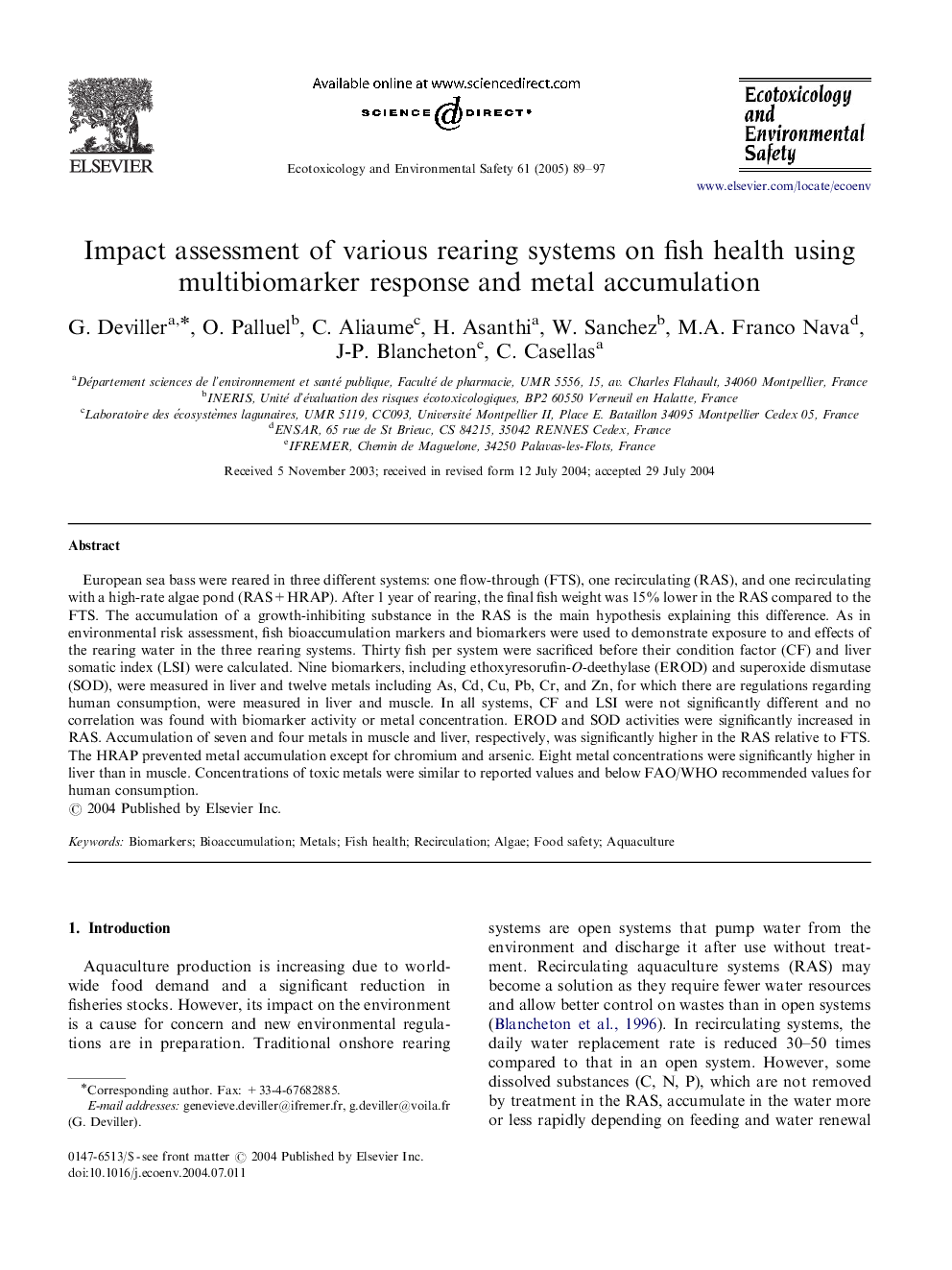| Article ID | Journal | Published Year | Pages | File Type |
|---|---|---|---|---|
| 9454776 | Ecotoxicology and Environmental Safety | 2005 | 9 Pages |
Abstract
European sea bass were reared in three different systems: one flow-through (FTS), one recirculating (RAS), and one recirculating with a high-rate algae pond (RAS+HRAP). After 1 year of rearing, the final fish weight was 15% lower in the RAS compared to the FTS. The accumulation of a growth-inhibiting substance in the RAS is the main hypothesis explaining this difference. As in environmental risk assessment, fish bioaccumulation markers and biomarkers were used to demonstrate exposure to and effects of the rearing water in the three rearing systems. Thirty fish per system were sacrificed before their condition factor (CF) and liver somatic index (LSI) were calculated. Nine biomarkers, including ethoxyresorufin-O-deethylase (EROD) and superoxide dismutase (SOD), were measured in liver and twelve metals including As, Cd, Cu, Pb, Cr, and Zn, for which there are regulations regarding human consumption, were measured in liver and muscle. In all systems, CF and LSI were not significantly different and no correlation was found with biomarker activity or metal concentration. EROD and SOD activities were significantly increased in RAS. Accumulation of seven and four metals in muscle and liver, respectively, was significantly higher in the RAS relative to FTS. The HRAP prevented metal accumulation except for chromium and arsenic. Eight metal concentrations were significantly higher in liver than in muscle. Concentrations of toxic metals were similar to reported values and below FAO/WHO recommended values for human consumption.
Related Topics
Life Sciences
Environmental Science
Environmental Chemistry
Authors
G. Deviller, O. Palluel, C. Aliaume, H. Asanthi, W. Sanchez, M.A. Franco Nava, J-P. Blancheton, C. Casellas,
